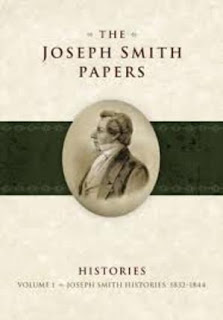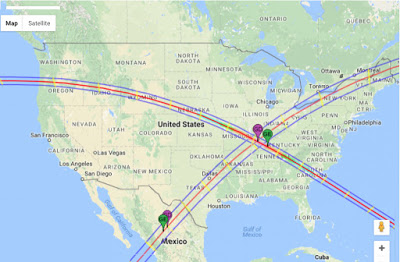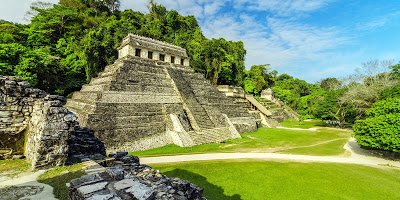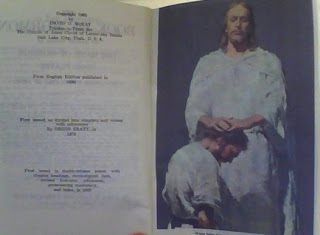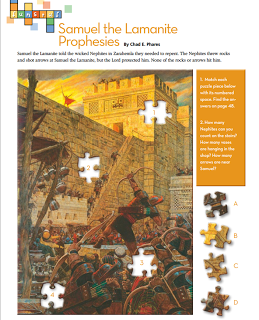Letter VII in Histories, Volume 1
For those who have the Joseph Smith Papers in hard copy, Volume 1 of Histories contains Oliver Cowdery’s Letter VII as it appears in Joseph Smith’s own history, beginning on p. 72. The comments about Cumorah in New York start on page 76.
The Editorial Note explaining how the letters were copied into Joseph’s journal begins on page 38.
_______________
Error in Joseph Smith Papers
Histories Volume 1 also contains what I consider one of the most serious errors in the Joseph Smith Papers. It’s actually a disastrous error, in my opinion. I’ve blogged about it before.
On p. 519, the Historical Introduction to Orson Pratt’s pamphlet titled A Interesting Account of Several Remarkable Visions includes this comment:
“In his description of the Book of Mormon, Orson Pratt superimposed his understanding of Book of Mormon geography onto the Western Hemisphere by placing the Nephites in South America and the Jaredites in North America. Pratt’s association of Book of Mormon peoples with the history of all of North and South America matched common understanding of early Latter-day Saints. Shortly thereafter, when John Lloyd Stephens’s Incidents of Travel in Central America, Chiapas, and Yucatan became available in Nauvoo in about 1842, JS greeted it enthusiastically and church members used it to map Book of Mormon sites in a Central American setting.6″
Note 6 says:
______________________
Think about this a minute.
Orson Pratt’s pamphlet was important because, as the Joseph Smith Papers volume points out, it was a source for the Wentworth letter, including the Articles of Faith. I’ve done a side-by-side comparison so anyone can see how the Wentworth letter compares with Pratt’s pamphlet. One of the most important comparisons involves Book of Mormon geography.
You can read the Wentworth letter in its original form here. Remember, you can’t read the entire letter in the Church manual Teachings of the Presidents of the Church: Joseph Smith, because the curriculum committed edited out Joseph’s comments about the geography question, which I’ll mention below.
I’m going to repeat the comment and note and insert my comments in red.
“In his description of the Book of Mormon, Orson Pratt superimposed his understanding of Book of Mormon geography onto the Western Hemisphere by placing the Nephites in South America and the Jaredites in North America. [Pratt wrote several pages of comments on this topic, claiming among other things that Lehi “landed upon the western coast of South America” and that “in process of time, the Nephites began to build ships near the Isthmus of Darien, and launch them forth into the western ocean, in which great numbers sailed a great distance to the northward, and began to colonize North America.” As the Joseph Smith Papers comments explain, Pratt’s pamphlet was apparently a source for the Wentworth letter. But instead of copying or adapting Orson Pratt’s imaginary account of Book of Mormon geography, Joseph Smith replaced it with the simple statement that “The principal nation of the second race fell in battle to wards the close of the fourth century. The remnant are the Indians that now inhabit this country.” These are the sentences that the Curriculum Committee edited out of the manual. People ask me why. Of course, I have no idea, but I infer that they didn’t want teachers taking time to explain how that statement can be rationalized with a Mesoamerican setting. It obviously cannot be reconciled; the statement is consistent with D&C 28, 30 and 32, which also specifically identify the Lamanites as the Indians living in the United States. The significance of this is that Joseph corrected Orson Pratt, but none of the scholars seem to care about that. Actually, apathy would be an improvement over the Curriculum Committee editing it out, especially when Joseph made the point at the beginning of the Wentworth letter that “all that I shall ask at his hands, is, that he publish the account entire, ungarnished, and without misrepresentation.” Joseph didn’t need to be concerned about Mr. Wentworth; he should have been concerned about the Curriculum Committee.]
Pratt’s association of Book of Mormon peoples with the history of all of North and South America matched common understanding of early Latter-day Saints. [That should read, “early Latter-day Saints besides Joseph Smith. There is not a single reference to a hemispheric model that can be directly linked to Joseph. In fact, everything that can be directly linked to Joseph refers exclusively to a North American setting. The only location that early Latter-day Saints–including Joseph Smith–agreed upon was that the Hill Cumorah was in New York. Compare that to the current situation, when those of us who support the New York setting are rejected and ridiculed by LDS scholars.]
Shortly thereafter, when John Lloyd Stephens’s Incidents of Travel in Central America, Chiapas, and Yucatan became available in Nauvoo in about 1842, JS greeted it enthusiastically and church members used it to map Book of Mormon sites in a Central American setting.6″ [This one is the most difficult to justify. Note 6 below gives the usual suspects as authority for the statement. The anonymous articles in the Times and Seasons, as even Terryl Givens points out, cannot be directly tied to Joseph Smith. As I’ve proposed elsewhere, William Smith was the acting editor of the Times and Seasons when those articles were published, and Benjamin Winchester is by far the most likely author, with editorial input from William and/or W.W. Phelps. The note also cites the Bernhisel letter, which I’ve shown was almost certainly written by Wilford Woodruff, the only person we know of who actually read the Stephens books before these articles were published in the Times and Seasons. This concept that Joseph “enthusiastically” greeted the Stephens books flies in the face of the Wentworth letter, which as I just pointed out, deleted Orson Pratt’s hemispheric model and reaffirmed the North American setting by specifying that Lehi’s descendants were the Indians living in this country; i.e., the United States. The “enthusiastically” characterization is derived from a particular uncited paper, but I won’t identify that paper here.]
Note 6 says:
______________________
You can see this same comment and note in the online version here. Look under the Historical Introduction, third paragraph, including note 6.
Feel free to send in a comment to the Joseph Smith Papers. I already have, but I don’t think they’re listening to me.
🙂
Source: Letter VII
